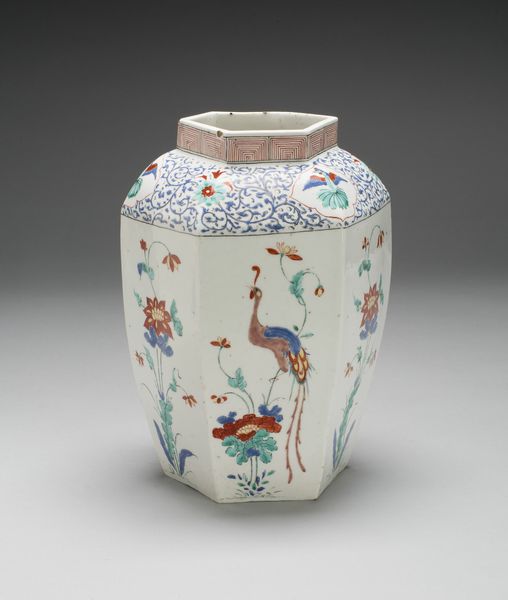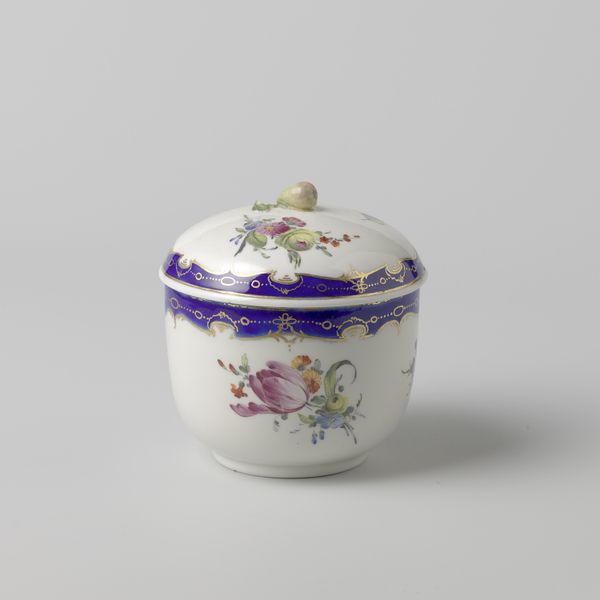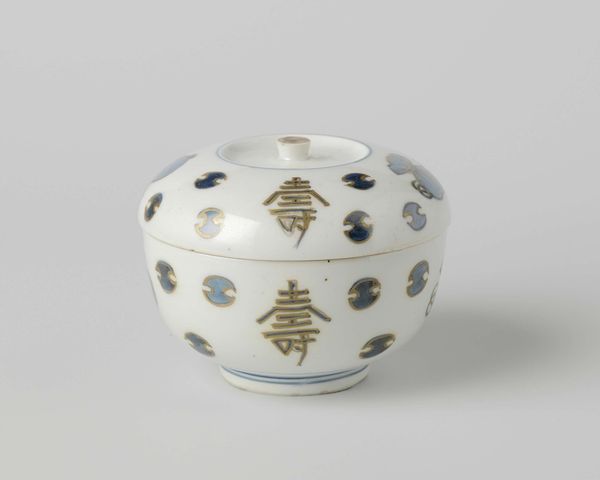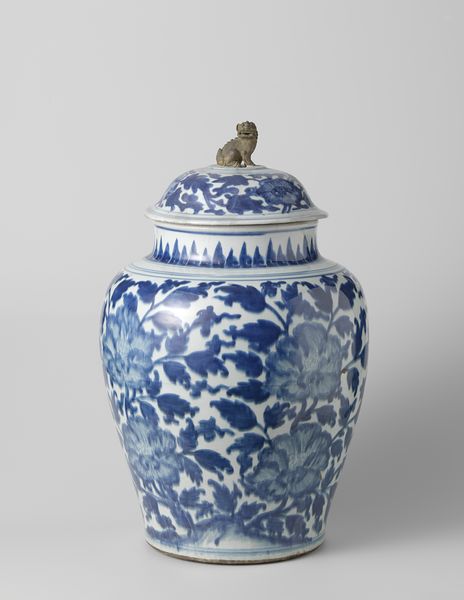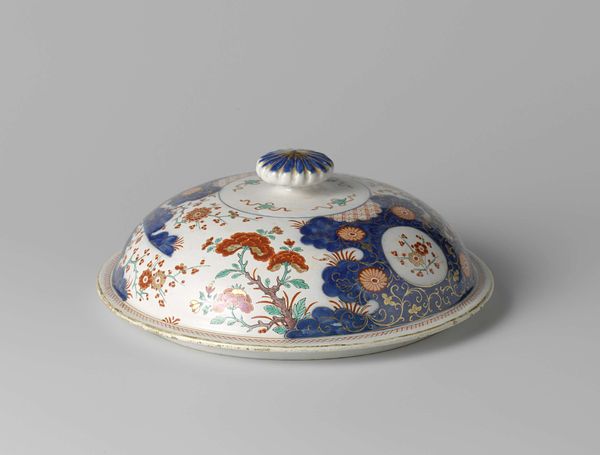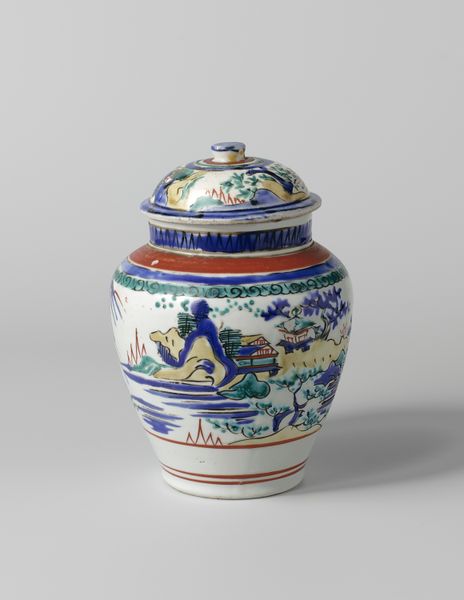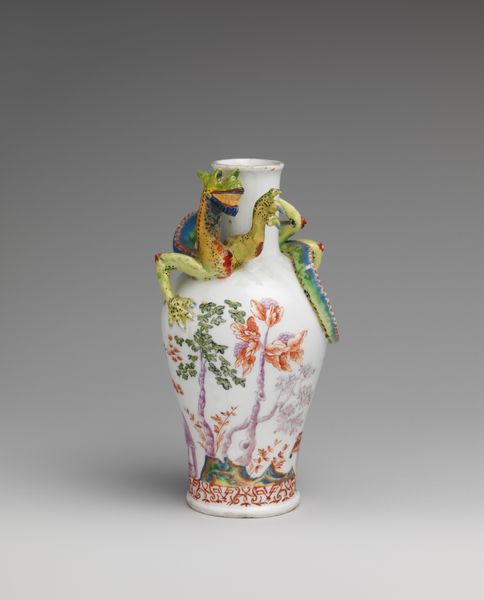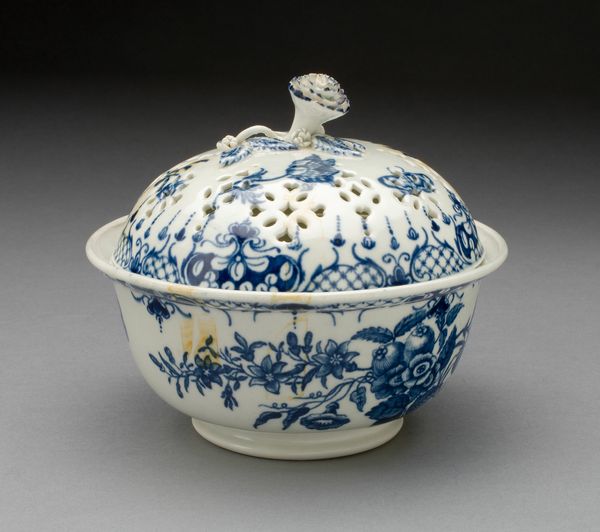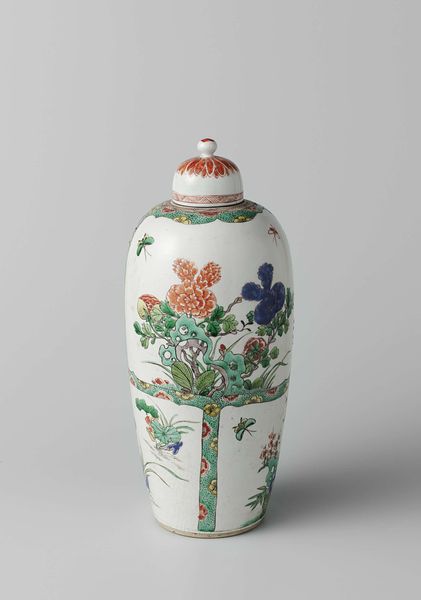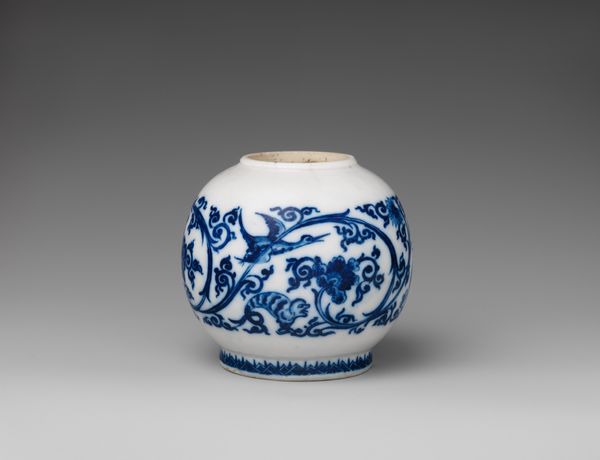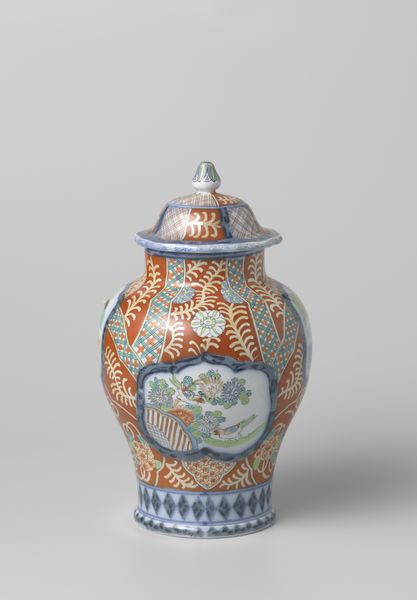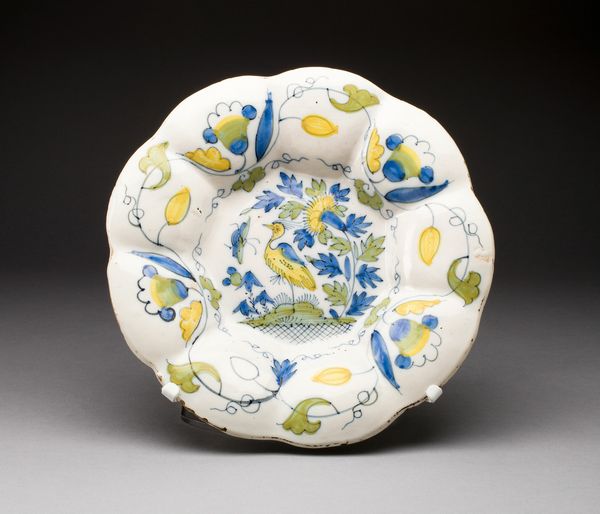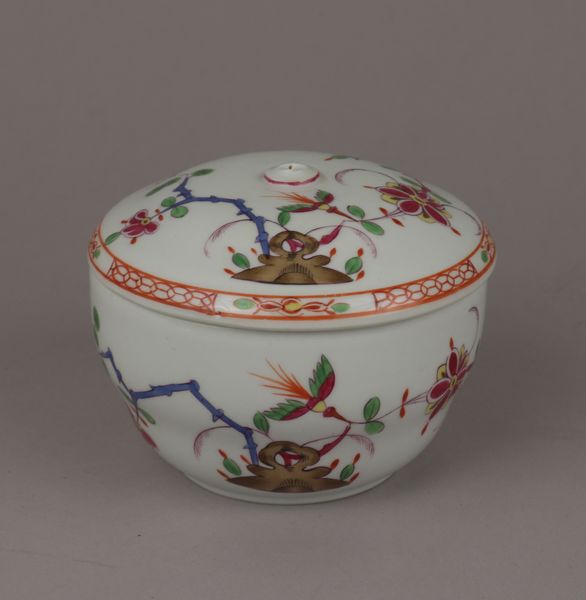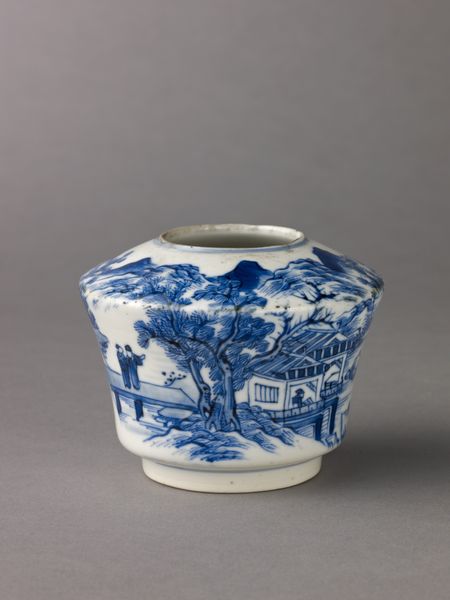
ceramic, earthenware
#
asian-art
#
ceramic
#
earthenware
#
decorative-art
Dimensions: height 9 cm, diameter 9.5 cm
Copyright: Rijks Museum: Open Domain
Curator: Here in Gallery 27 at the Rijksmuseum, we have an intriguing piece titled "Box in the Shape of a Knotted Cloth," dating from around 1670 to 1690. It is listed as work from an anonymous artist. Editor: Oh, wow. At first glance, I'm charmed! The floral painting against what's obviously stylized ceramic work suggesting bundled cloth is just disarming. I want to peek inside – what secrets is this pretty object holding? Curator: The medium itself is quite compelling. It’s crafted from earthenware, making it a particularly beautiful piece of decorative art. Considering the timeframe, this box emerges from an era deeply influenced by Asian artistic traditions. You see this reflected through design motifs and decorative choices of Asian art and ceramic. Editor: Yes, it makes you consider who made it and for what use. Imagine the craftsman meticulously shaping earthenware to mimic something as delicate as cloth… and the box being meant to resemble cloth filled with precious things! It prompts thinking about artistry, labor, and ultimately the economy surrounding decorative arts in that era. I am interested in the process. How precisely did the artisans give earthenware this texture and painted floral design, and how did those production methods and resources influence similar ceramic objects at that moment in time? Curator: Exactly. There's an implied intimacy here as well – an object meant for private, perhaps treasured possessions. The cloth, even rendered in rigid ceramic, conveys a sense of care and wrapping… Editor: Right – you bring up that feeling of intimacy. The "anonymous" artist heightens the interest, really. Because we don’t have a name associated with the maker. We tend to attribute greater importance to an object once we attribute its ownership to a "famous artist". Who crafted it, and under what constraints? What were their intentions, and how was the artist/craftsman influenced? I would research and write about these types of cultural impacts… Curator: All true. This small box is beautiful—but it’s a beautiful object that encapsulates so many complex and interesting layers: of trade, technique, and cultural interpretation and, as you say, material consumption. Editor: And there is no end of research to be completed to consider social aspects: Who was meant to have these floral figures placed on an object? Were they to represent certain family status? Curator: I am thankful it speaks so strongly to what we cannot know and still offers avenues for contemplating so much… a material worth spending time meditating on, I should say.
Comments
No comments
Be the first to comment and join the conversation on the ultimate creative platform.
